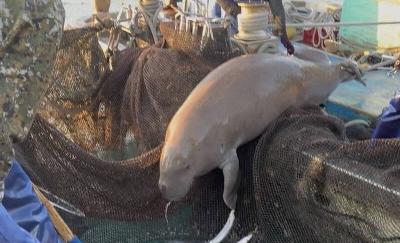A US Navy aircraft carrier and five escort ships have arrived in the South China Sea amid rising tensions over China’s militarization of disputed islands, Washington officials confirmed on Friday.
The Navy Times described the deployment as “a small armada.”
Officials approached by the Taipei Times played down the situation and passed it off as routine, but Fox News said that “multiple defense officials” told it the move was “a show of force” and a signal to China.
A US Pacific Fleet spokesman said the nuclear-powered carrier USS John C. Stennis and its air wing, along with two destroyers — USS Chung-Hoon and USS Stockdale — and two cruisers — USS Antietam and USS Mobile Bay — were in the region.
The Navy Times said that the command ship USS Blue Ridge, the floating headquarters of the Japan-based US Seventh Fleet, was also in the area.
According to Center for a New American Security analyst Jerry Hendrix, the Pentagon is demonstrating its full commitment to presence and freedom of navigation in the region.
“With the full carrier strike group and the command ship, the navy is showing the scope of its interests and ability to project presence and power around the world,” he told the Navy Times.
A report issued last month by the think tank said the days of the US Navy’s “unchallenged primacy” around the world might be coming to an end.
It said that accelerated investment in anti-access and area denial weapons by China, Russia and Iran were placing greater constraints on US carrier operations.
The report said that Chinese surface-to-air missiles, anti-ship cruise missiles and tactical unmanned aerial vehicles “capable of reaching Taiwan” were significant threats to the carrier group and its air wing.
Admiral Harry Harris, commander of the US Pacific Command, last month said that China was deploying fighter jets, missiles and radar systems across the South China Sea and “changing the operational landscape” of the region.
As reported by the Taipei Times, Harris said: “Chinese leaders seem to believe that, through coercion, intimidation and force, they can bypass accepted methods of dispute resolution.”
The admiral’s remarks led US Senate Committee on Armed Services chairman John McCain to call on US President Barack Obama to increase freedom of navigation operations in the South China Sea.
Deployment of the Stennis and its support group would appear to be — at least in part — a response to the concerns raised by Harris and McCain.
Earlier this week, US Secretary of Defense Ashton Carter warned in a speech that “China must not pursue militarization in the South China Sea.”
“Specific actions will have specific consequences,” Carter said.
The navy has completed two freedom of navigation patrols in the South China Sea — sailing within 12 nautical miles (22.2km) of artificial islands claimed by China — since October last year.
While China claims sovereignty over most of the islands, reefs and atolls that make up the Paracel Islands (Xisha Islands, 西沙群島) and the Spratly Islands (Nansha Islands, 南沙群島), Washington says that ownership is disputed and the surrounding seas are international waterways.
Pentagon sources refused to say whether ships in the Stennis group would conduct freedom of navigation patrols around the islands, which are also claimed by Taiwan.
However, a retired senior navy official told the Taipei Times that he would be “very surprised” if this did not happen.

‘DENIAL DEFENSE’: The US would increase its military presence with uncrewed ships, and submarines, while boosting defense in the Indo-Pacific, a Pete Hegseth memo said The US is reorienting its military strategy to focus primarily on deterring a potential Chinese invasion of Taiwan, a memo signed by US Secretary of Defense Pete Hegseth showed. The memo also called on Taiwan to increase its defense spending. The document, known as the “Interim National Defense Strategic Guidance,” was distributed this month and detailed the national defense plans of US President Donald Trump’s administration, an article in the Washington Post said on Saturday. It outlines how the US can prepare for a potential war with China and defend itself from threats in the “near abroad,” including Greenland and the Panama

A wild live dugong was found in Taiwan for the first time in 88 years, after it was accidentally caught by a fisher’s net on Tuesday in Yilan County’s Fenniaolin (粉鳥林). This is the first sighting of the species in Taiwan since 1937, having already been considered “extinct” in the country and considered as “vulnerable” by the International Union for Conservation of Nature. A fisher surnamed Chen (陳) went to Fenniaolin to collect the fish in his netting, but instead caught a 3m long, 500kg dugong. The fisher released the animal back into the wild, not realizing it was an endangered species at

The High Prosecutors’ Office yesterday withdrew an appeal against the acquittal of a former bank manager 22 years after his death, marking Taiwan’s first instance of prosecutors rendering posthumous justice to a wrongfully convicted defendant. Chu Ching-en (諸慶恩) — formerly a manager at the Taipei branch of BNP Paribas — was in 1999 accused by Weng Mao-chung (翁茂鍾), then-president of Chia Her Industrial Co, of forging a request for a fixed deposit of US$10 million by I-Hwa Industrial Co, a subsidiary of Chia Her, which was used as collateral. Chu was ruled not guilty in the first trial, but was found guilty

The Chinese Nationalist Party (KMT) is maintaining close ties with Beijing, the Democratic Progressive Party (DPP) said yesterday, hours after a new round of Chinese military drills in the Taiwan Strait began. Political parties in a democracy have a responsibility to be loyal to the nation and defend its sovereignty, DPP spokesman Justin Wu (吳崢) told a news conference in Taipei. His comments came hours after Beijing announced via Chinese state media that the Chinese People’s Liberation Army’s Eastern Theater Command was holding large-scale drills simulating a multi-pronged attack on Taiwan. Contrary to the KMT’s claims that it is staunchly anti-communist, KMT Deputy